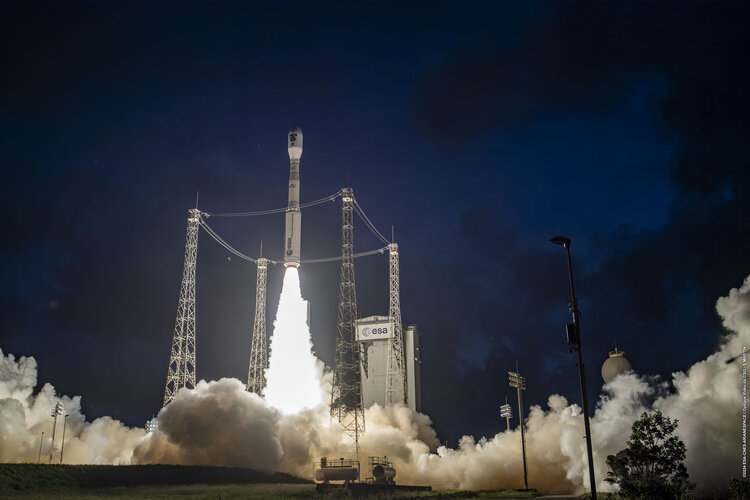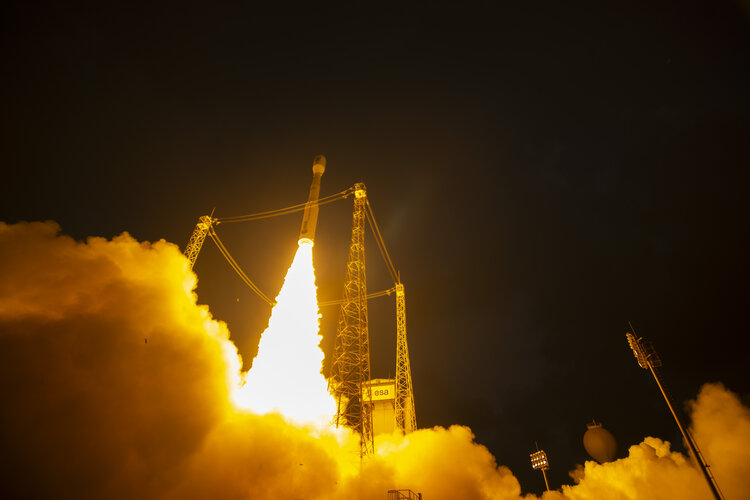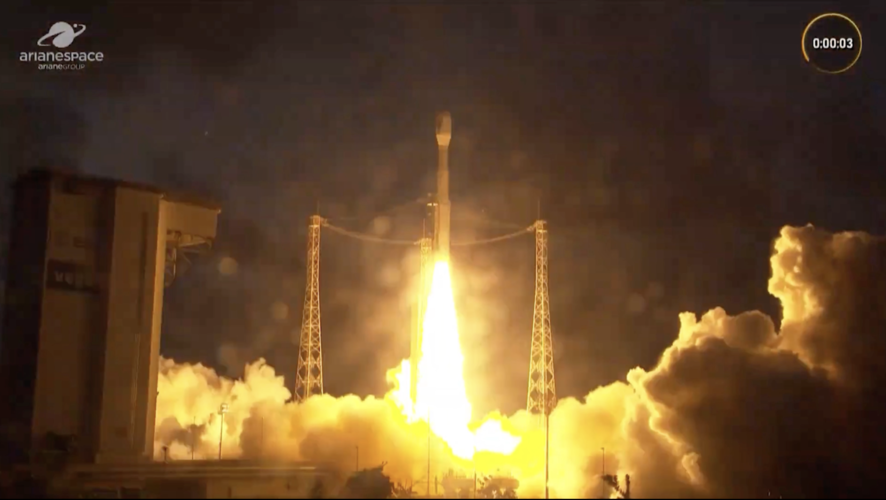A rare Venus solar transit sheds light on exoplanet atmospheres
Friday, 06 December 2024 02:12 In the coming decade, astronomers will begin exploring the atmospheres of Earth- and Venus-sized planets orbiting nearby stars. Despite their physical similarities, Venus and Earth have drastically different atmospheres. This raises the question: could scientists distinguish between these "twin" planets if observed from light-years away?
Researchers from the Instituto de Astrofisica e Cien
In the coming decade, astronomers will begin exploring the atmospheres of Earth- and Venus-sized planets orbiting nearby stars. Despite their physical similarities, Venus and Earth have drastically different atmospheres. This raises the question: could scientists distinguish between these "twin" planets if observed from light-years away?
Researchers from the Instituto de Astrofisica e Cien Particle research gets closer to answering why we're here
Friday, 06 December 2024 02:12 Physicists hope to answer fundamental questions about the origins of the universe by learning more about its tiniest particles.
University of Cincinnati Professor Alexandre Sousa helped outline the next 10 years of global research into the behavior of neutrinos, particles so tiny that they pass through virtually everything by the trillions every second at nearly the speed of light.
T
Physicists hope to answer fundamental questions about the origins of the universe by learning more about its tiniest particles.
University of Cincinnati Professor Alexandre Sousa helped outline the next 10 years of global research into the behavior of neutrinos, particles so tiny that they pass through virtually everything by the trillions every second at nearly the speed of light.
T Hubble delivers unprecedented view of a quasar
Friday, 06 December 2024 02:12 Using NASA's Hubble Space Telescope, astronomers have achieved an unprecedentedly close look into the core of a quasar - a luminous and energetic galactic nucleus powered by a supermassive black hole. This study reveals intricate structures surrounding the black hole and sheds new light on the dynamic processes fueling quasars.
According to Bin Ren of the Cote d'Azur Observatory and Univer
Using NASA's Hubble Space Telescope, astronomers have achieved an unprecedentedly close look into the core of a quasar - a luminous and energetic galactic nucleus powered by a supermassive black hole. This study reveals intricate structures surrounding the black hole and sheds new light on the dynamic processes fueling quasars.
According to Bin Ren of the Cote d'Azur Observatory and Univer GPS alternative for drone navigation leverages celestial data
Friday, 06 December 2024 02:12 In response to the rising threat of GPS jamming in drone warfare, researchers at the University of South Australia (UniSA) have pioneered a celestial navigation system that uses star-based visual data as an alternative to the global positioning system.
Combining celestial navigation with vision-based technology, UniSA's remote sensing engineers have created a lightweight, cost-effective sy
In response to the rising threat of GPS jamming in drone warfare, researchers at the University of South Australia (UniSA) have pioneered a celestial navigation system that uses star-based visual data as an alternative to the global positioning system.
Combining celestial navigation with vision-based technology, UniSA's remote sensing engineers have created a lightweight, cost-effective sy Telebras and SES bring internet access to over 1500 sites in Brazil's Northern Region
Friday, 06 December 2024 02:12 Telebras, in partnership with SES and other collaborators, has enhanced digital connectivity in Brazil's Northern Region by deploying over 1,500 Internet access points. These sites, established through the Government Electronic Service for Citizen Assistance (GESAC) program, include public institutions, schools, libraries, telecenters, health units, indigenous villages, and rural settlements.
Telebras, in partnership with SES and other collaborators, has enhanced digital connectivity in Brazil's Northern Region by deploying over 1,500 Internet access points. These sites, established through the Government Electronic Service for Citizen Assistance (GESAC) program, include public institutions, schools, libraries, telecenters, health units, indigenous villages, and rural settlements. Double win for Europe: Sentinel-1C and Vega-C take to the skies
Thursday, 05 December 2024 22:15
The third Copernicus Sentinel-1 satellite was launched on a Vega-C rocket from Europe’s Spaceport in French Guiana. Sentinel-1C extends the legacy of its predecessors, delivering high-resolution radar imagery to monitor Earth’s changing environment, supporting a diverse range of applications and advancing scientific research. Additionally, Sentinel-1C introduces new capabilities for detecting and monitoring maritime traffic.
Radar mission takes to the skies
Thursday, 05 December 2024 20:35 Image:
Radar mission takes to the skies
Image:
Radar mission takes to the skies Long March 6A launches third batch of Thousand Sails constellation satellites
Thursday, 05 December 2024 20:28
Vega-C takes Sentinel-1C into orbit
Thursday, 05 December 2024 20:27 Image:
Vega-C takes Sentinel-1C into orbit
Image:
Vega-C takes Sentinel-1C into orbit Sentinel-1C launches on Vega-C
Thursday, 05 December 2024 20:20 Video:
00:02:40
Video:
00:02:40
The third Copernicus Sentinel-1 satellite, Sentinel-1C, has launched aboard a Vega-C rocket, flight VV25, from Europe’s Spaceport in French Guiana. The rocket lifted off on 5 December 2024 at 22:20 CET (18:20 local time).
Sentinel-1C extends the legacy of its predecessors, delivering high-resolution radar imagery to monitor Earth’s changing environment, supporting a diverse range of applications and advance scientific research. Additionally, Sentinel-1C introduces new capabilities for detecting and monitoring maritime traffic.
The launch also marks Vega-C’s ‘return to flight’, a key step in restoring Europe’s independent access to space. Vega-C is the evolution of the Vega family of rockets and delivers increased performance, greater payload volume and improved competitiveness.
Extreme Weather: Revolutionizing Weather Preparedness with Space Technology – Webinar Replay
Thursday, 05 December 2024 17:14

Europe's troubled Vega-C rocket to launch after delays
Thursday, 05 December 2024 16:40This request seems a bit unusual, so we need to confirm that you're human. Please press and hold the button until it turns completely green. Thank you for your cooperation!
Press and hold the button
If you believe this is an error, please contact our support team.
185.132.36.159 : be11582b-abe1-409a-ae88-258b7bdf
NASA's stuck astronauts hit 6 months in space. Just 2 more to go
Thursday, 05 December 2024 16:13This request seems a bit unusual, so we need to confirm that you're human. Please press and hold the button until it turns completely green. Thank you for your cooperation!
Press and hold the button
If you believe this is an error, please contact our support team.
185.132.36.159 : 1006f3c8-ad79-4c10-a110-e431a5c8
European satellites launched to create artificial solar eclipses in a tech demo
Thursday, 05 December 2024 16:12This request seems a bit unusual, so we need to confirm that you're human. Please press and hold the button until it turns completely green. Thank you for your cooperation!
Press and hold the button
If you believe this is an error, please contact our support team.
185.132.36.159 : 3266fad4-8d5c-411e-8ae8-50a0bfe7



